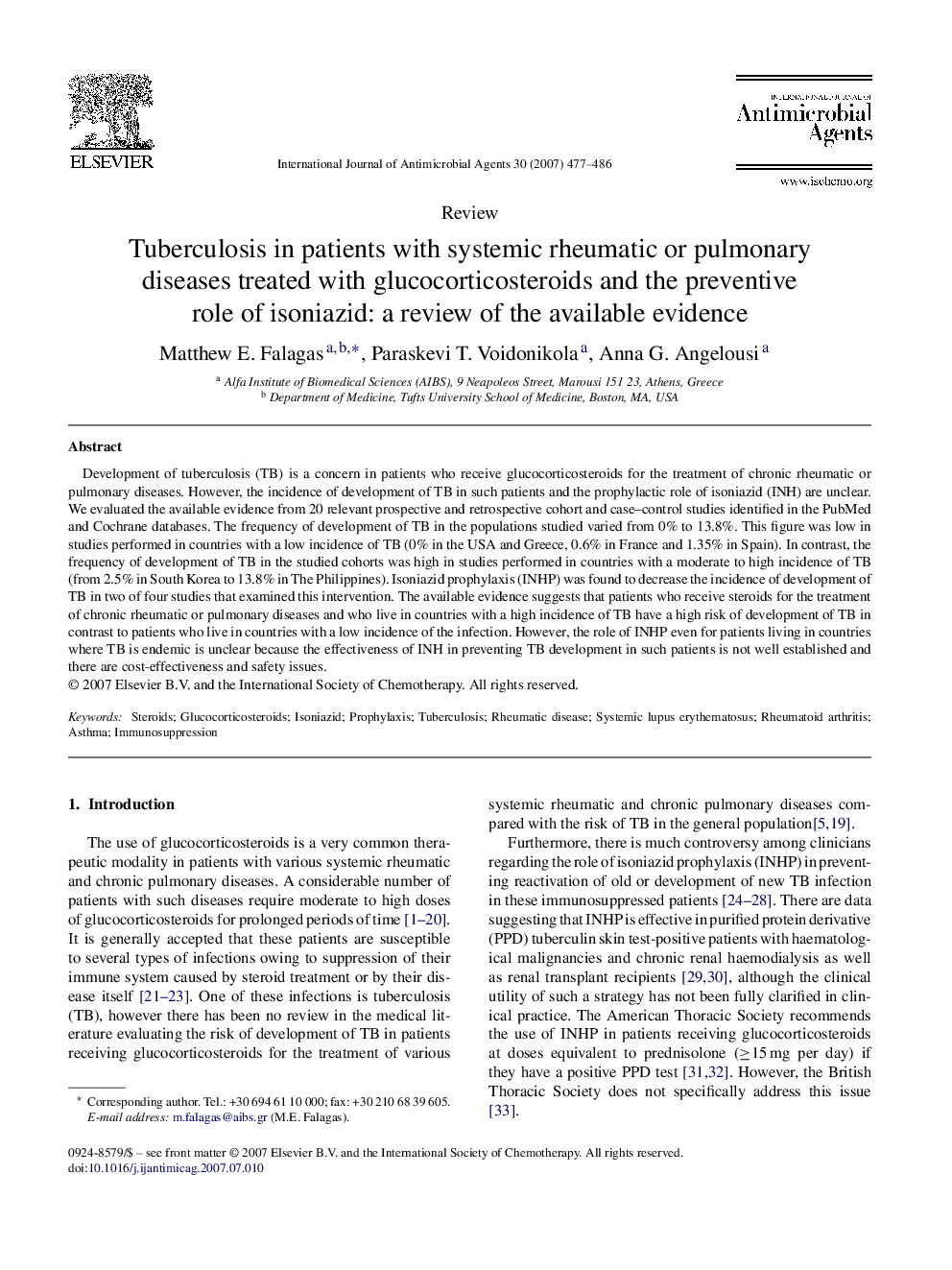| Article ID | Journal | Published Year | Pages | File Type |
|---|---|---|---|---|
| 3360741 | International Journal of Antimicrobial Agents | 2007 | 10 Pages |
Development of tuberculosis (TB) is a concern in patients who receive glucocorticosteroids for the treatment of chronic rheumatic or pulmonary diseases. However, the incidence of development of TB in such patients and the prophylactic role of isoniazid (INH) are unclear. We evaluated the available evidence from 20 relevant prospective and retrospective cohort and case–control studies identified in the PubMed and Cochrane databases. The frequency of development of TB in the populations studied varied from 0% to 13.8%. This figure was low in studies performed in countries with a low incidence of TB (0% in the USA and Greece, 0.6% in France and 1.35% in Spain). In contrast, the frequency of development of TB in the studied cohorts was high in studies performed in countries with a moderate to high incidence of TB (from 2.5% in South Korea to 13.8% in The Philippines). Isoniazid prophylaxis (INHP) was found to decrease the incidence of development of TB in two of four studies that examined this intervention. The available evidence suggests that patients who receive steroids for the treatment of chronic rheumatic or pulmonary diseases and who live in countries with a high incidence of TB have a high risk of development of TB in contrast to patients who live in countries with a low incidence of the infection. However, the role of INHP even for patients living in countries where TB is endemic is unclear because the effectiveness of INH in preventing TB development in such patients is not well established and there are cost-effectiveness and safety issues.
